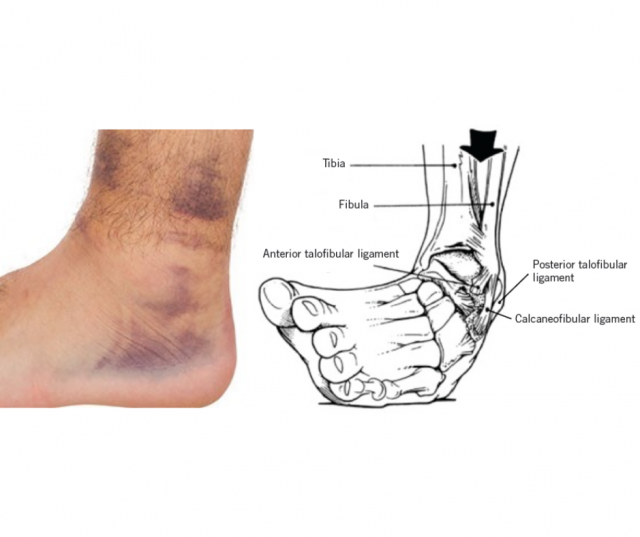News: Ankle Sprains – Help is only a click away!
By Dr David Cork, Osteopath
Ankle sprains are the most common sports injury accounting for approximately 30% of all sporting injuries. Common sports ankle sprains occur in are basketball, netball, tennis, soccer, rugby, and football.
How do ankle sprains occur?
The ankle is a joint made up of 3 bones that interlock to give stability. There are thick bands of connective tissue called ligaments that reinforce the joint. The vast majority of ankle sprains occur on the outside of the ankle injuring the ligaments (specifically the anterior talofibular ligament (ATFL)). These sprains occur when the ankle rolls excessively with the bottom of the foot travelling inwards – think landing on outside edge of your foot – which overstretches the ligaments on the outside of the ankle.
What are symptoms of a lateral ankle sprain?
- Mechanism of injury where the foot rolls under the ankle
- Pain on outside of ankle
- Swelling with or without bruising
- Difficulty weight bearing on the ankle
This type of injury commonly occurs in sport when:
- Changing direction e.g. hitting a backhand on the left side of a tennis court to immediately change direction and hit a forehand on the right side of the court
- Landing with the foot in an awkward position e.g. landing on another player’s foot or on an unstable or unforeseen surface, such as when jumping for a ball in basketball or running and not seeing a pot hole.
Why is it important to get ankle sprains assessed and treated?
- To get a correct diagnosis and rule out more serious injuries. A detailed history of the injury needs to be taken as well as a thorough examination. In some situations you may be referred for an X-ray of the ankle to rule out a fracture. (Note: untreated ankle fractures can lead to significant disability as the ankle can become permanently unstable)
- It is very important to get a good exercise rehabilitation program to reduce the chance of reoccurrence so a more chronic issue doesn’t develop. It is reported that in some sports the reoccurrence rate is as high as 70%. Completing the full rehabilitation process is essential to preventing ongoing ankle issues. We often see patients months after the original ankle injury complaining of persistent ankle pain after only just icing and resting. Please don’t be one of these patients! Get an assessment when the injury occurs.
How we can help with ankle sprains
At South Eastern Active Health we excel at providing rehabilitation programs to return you to your sport at your best. Every ankle injury is different but most sprains will follow this general framework:
Stage 1: Acute management (first 24-48 hours)
- Rest from aggravating activities; icing may be considered as well
- Swelling control e.g. compression like tubigrip or compression socks
- Gentle pain-free exercise e.g. specific non weight bearing ankle movements
- Crutches if weight bearing is too painful
Stage 2
- Regain ability to weight bear on the ankle
- Regain full ankle mobility
Stage 3
- Improve ankle stability & balance
- Improve proprioception (body awareness) of ankle. This allows you to react quicker when your ankle might roll, and stop it.
- Improve calf/ankle strength and endurance
- Progress into explosive and sideways movements e.g. speed hopping, lateral jumps, progressing into agility drills
- Optimise footwear, running technique or change direction technique, leading to optimized biomechanics.
Stage 4: Return to sport
- Be able to complete multiple training sessions at high level of performance e.g. to be eligible to compete in regular competition.
References
Bachmann, et al. (2003). Accuracy of Ottawa ankle rules to exclude fracture of the ankle and mid-foot: a systematic review. British Medical Journal
Beynnon, Murphy, Alosa, (2002). Predictive factors for lateral ankle sprain: A literature review. Journal of Athletic Training,
Brukner, Khan (2007). Clinical Sports Medicine (4th ed)



